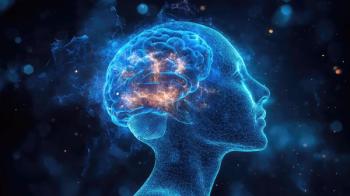
- Vol 30 No 6
- Volume 30
- Issue 6
Psychiatric Epigenetics: A Key to the Molecular Basis of and Therapy for Psychiatric Disorders
The major challenges for epigenetic therapies are target specificity of the drugs-an issue that is also true for most of the currently used drugs in medicine, especially in psychiatry.
The term “epigenetic” was first coined by Waddington in 1939 to describe diverse reprogramming of the same genetic materials to generate a multicellular organism from a single cell. With new technologies and knowledge, several types of epigenetic modifications-such as DNA methylation, histone modifications, RNA editing, and RNA interference-have been discovered. These modifications are involved in the regulation of gene expression without changing the sequence of DNA. In fact, while genetic codes determine the structure of proteins, epigenetic codes define the time, duration, and amount of protein synthesis in a specific cell or tissue.
Epigenetics has evolved to become the science that explains how the differences in the patterns of gene expression in diverse cells or tissues are executed and inherited. Although heritable, epigenetic programming is influenced by micro and macro environmental factors, and it provides a short-term and generation-specific cellular memory to adapt to variable conditions. It can also be considered as a buffering mechanism to compensate for genetic defects. This dynamic pattern of gene regulation might be a response to internal cues (eg, hormones, neurotransmitters, cellular metabolic states) as well as external cues (eg, neuronal activation, climate changes, seasons, drugs, malnutrition, contaminants). Some epigenetic changes induced by external cues can be transferred to next generation, leading to a disease state.
Many psychiatric disorders, such as bipolar disorder and major depression, are episodic and may spontaneously remit. The episodic nature of these diseases suggests that they are unlikely to be pure genetic diseases, which in general are responsible for the genesis of life-long illness. A multitude of genome-wide association scans of thousands of patients with schizophrenia or bipolar disorder and controls have revealed that while genetic mutations of hundreds of genes appear to be associated with severe mental illness, the effective contribution of each gene is very small (1% to 2%).1 This, along with the fact that the majority of affected individuals do not exhibit any single pattern of genetic mutations, implies that major psychiatric disorders are multifactorial and may involve epigenetic alterations.
In contrast to genetic marks that cannot be restored (at least with the current techniques), epigenetic marks are more amenable to preventive and/or therapeutic modifications using a variety of agents, such as enzymes, hormones, vitamins, nutrients, and drugs (Table 1 and Table 2). The common types of epigenetic modifications are discussed in brief, to provide a rationale for their suitability to design therapeutics.
DNA methylation as a target for epigenetic therapy
DNA methylation, a common epigenetic alteration of the cytosine residue in the context of CpG dinucleotides, has long been detected in mammals. Methylated CpGs are targets for DNA-binding domain proteins such as MBD1, MBD3, MBD4, and MeCP2, which correspond to silencing of gene expression, genomic imprinting, suppression of transposable elements, and X inactivation in females. In the early embryonic stage, DNA methylation marks are erased to generate virtual totipotent cells that then acquire a tissue-specific epigenome that defines the identity and destination of the differentiated cells. Any interference in the process, including the unavailability of the various factors or nutrients (eg, methyl groups, folic acid) may result in an aberrant DNA methylome in the derivative cells.
Hormones or environmental cues can cause demethylation and de novo methylation to alter the inherited pattern of DNA. While DNA methyltransferases convert unmethylated cytosine residues to 5-methylcytosine (5mC), the TET and IDH family proteins convert 5mC to 5-hydroxymethylcytosine (5hmC), a transitional product during demethylation (Table 1). Interestingly, in the brain, a significant fraction of the methylated cytosines are in fact 5hmC and correspond to the induction of gene expression. A dynamic exchange of 5mC and 5hmC may be a key mechanism for functional plasticity of neuronal cells, and an imbalance in the exchange between 5mC and 5hmC may lead to epigenetic dysregulation of many genes underlying psychotic manifestations.
The results of a postmortem study of the human brain showed that 5hmC levels at the GAD67 promoter in the inferior parietal lobule of patients with schizophrenia and bipolar disorder were increased compared with levels in controls.2 The increased levels of 5hmC in GAD67 are associated with a greater than 2-fold increase in TET1 expression. An increase in GADD45b expression (which is involved in DNA demethylation) was also seen in psychotic patients.3
A recent whole genome DNA methylation microarray analysis found that methylation values at 2868 CpG sites in DNA extracted from the saliva of 96 maltreated children were significantly different from those of controls.4 Another genome-wide DNA methylation analysis of the peripheral blood DNA in humans uncovered disease-associated aberrant DNA methylation of numerous CpGs in twins affected by schizophrenia and bipolar disorder versus discordant twins, among whom hypomethylation of the ST6GALNAC1 gene promoter was observed in postmortem brain tissue from those with psychosis.5
Data from the studies reviewed elsewhere6 and summarized in Table 3 show aberrant promoter DNA methylation of specific genes, including RELN, SOX10, WDR18, MB-COMT, and HTR2A, in postmortem brain samples of patients who had major psychiatric disorders.7 Recent whole genome DNA methylation studies of postmortem brain samples (H. M. Abdolmaleky and S. Thiagalingam, unpublished data, 2013) and of peripheral leukocytes identified specific DNA methylation changes8,9; and global DNA hypomethylation became attenuated with haloperidol treatment.9 Melas and colleagues9 found hypermethylation of soluble catechol-O-methyltransferase (s-COMT) in schizophrenia; another study suggested that s-COMT promoter DNA methylation is influenced by the 158Val/Met polymorphism as well as by physical activity.10 These observations support evidence that in addition to drugs and genetic polymorphisms, external cues may also modify epigenetic codes.
While more studies are required to identify the major affected pathways and genes, the existing data have influenced the use of drugs with epigenetic effects in treating patients with psychiatric disorders. At this time, the most remarkable drug seems to be sodium valproate, an “epigenetic softener” that indirectly decreases promoter DNA methylation through the inhibition of histone deacetylase (HDAC) enzymes. However, in the case of DNA hypomethylation (eg, in malnutrition, MDD, Alzheimer disease), the use of folic acid, vitamin B12, and L-methionine has been considered.6
Histone modifications and current therapeutics
Histone modifications are major epigenetic mechanisms closely tied with DNA methylation and frequently considered as a therapeutic target for various diseases. An octamer of positively charged histone core proteins (H2A, H2B, H3, H4) with the H1 linker histone (which are wrapped by 147 base pairs of DNA strands with a negative electric charge) constitutes the nucleosome (the building unit of chromatin assembled in chromosomes). Histone tails are subjected to various modifications, such as methylation, acetylation, and phosphorylation, that determine the transcriptionally active status of the chromatin as well as the accessibility to transcription factors. Several enzymes are involved in diverse types of histone modifications and, thus, induction or suppression of gene expression (Table 1). For instance, histone methyltransferases add and histone demethylases remove methyl groups of histone tails that, in turn, can, depending on the sequence context of the amino-acid residue, switch on or switch off gene expression. The target amino acids of histone tails can be mono-methylated, bi-methylated, or tri-methylated, making their functional status more complex (Table 1).
Activation or suppression of some of the enzymes that mediate epigenetic modifications have been used to treat many diseases, including major psychiatric disorders (Table 2). Valproate is an HDAC inhibitor, and it increases the level of histone acetylation. Lithium also increases the levels of histone H3 acetylation and phosphoacetylation in the central nucleus of the amygdala, which is associated with the induction of c-Fos.11 Haloperidol, clozapine, and benzamides have similar effects. Imipramine, amitriptyline, fluoxetine, escitalopram, tranylcypromine, and opioids are also epigenetic modifiers (see Table 2 for more details). Although the expression of HDAC1, HDAC2, and HDAC5 is higher with lurasidone than with valproate treatment, concomitant use of valproate led to higher brain-derived neurotrophic factor (BDNF) expression in the ventral hippocampus compared with either drug alone.12
RNA editing
RNA editing that includes substitution, deletion, or insertion of ribonucleotides corresponding to a coding DNA sequence can generate multiple variants of a single protein in diverse tissues, particularly in the brain as the result of neuronal activity. Multiple forms of serotonin, glutamate, and γ-aminobutyric acid (GABA) receptors with different functional and pharmacological properties that originate from RNA editing have been recognized in humans. Hence, some drugs that in-hibit or stimulate these targets in other tissues may fail to act in the human brain.13 In fact, the diversity of RNA editing in the human brain may underlie region-specific effects of modern antipsychotic drugs that are known for fewer adverse effects. A better understanding of this mechanism of epigenetic modification could provide opportunities for designing better drugs to target the exact variants of specific receptors, channels, or enzymes in particular areas of the brain in affected individuals.
DNA interference
Non-coding RNAs, such as microRNAs (miRNAs), which are 20 to 25 bases in length, are another important feature of epigenetic regulation. In general, miRNAs bind to target messenger RNAs (mRNAs) and inhibit the translation or degrade mRNAs and prevent protein synthesis. Remarkably, each gene can be targeted by multiple miRNAs and each miRNA (approximately 1000 known) may target hundreds of mRNAs. In addition to intracellular regulation of gene expression, miRNAs can affect the expression of various genes (eg, metabolic genes) far from the locations from which they were generated in the form of circulating miRNAs.
A number of studies have uncovered close to 2 dozen miRNAs affected in psychiatric disorders (Table 3). A microarray analysis showed decreased expression of 16 miRNAs in the frontal lobe of postmortem brains in patients with schizophrenia and schizoaffective disorder.14 The assay included miR-24, miR-26b, miR-30e, and miR-92, and results were confirmed by quantitative real-time polymerase chain reaction analysis.
Increased miRNA biogenesis in the superior temporal gyrus and dorsolateral prefrontal cortex and overexpression of miR-15a, miR-15b, miR-195, and miR-107 were also found in patients with schizophrenia. These miRNAs have the capacity to regulate the expression of target genes, including ATXN2, BDNF, CHRM1, DRD1, GABR1, GRIN1, GRM7, HTR4, NRG1, and RELN, which are known to be affected in schizophrenia.15 Overexpression of miR-181b was found to be associated with reduced expression of VSNL1 (which regulates the activity of adenylyl cyclase) and GRIA2 (glutamate receptor, ionotropic, AMPA 2) in the gray matter of the temporal cortex in postmortem brain samples of patients with schizophrenia. Subsequent studies verified that the expression of VSNL1 and GRIA2 is suppressed by synthetic miR-181b in cell culture experiments.16
Other targets of miR-181b are genes coding receptors for GABA (GABRA1), glutamate (GRID, GRIK2, GRM5, and GRM7), or serotonin (HTR1B and HTR2C), which contribute to the pathogenesis of mental diseases. GRID1 and miR-346, which are localized to the intron 2 of GRID1, exhibited reduced expression in postmortem brain samples of patients with schizophrenia.17
Recent findings suggest an increased expression of exosomal miR-497 and miR-29c in the postmortem prefrontal cortices of patients with schizophrenia and bipolar disorder, respectively, and a decrease in circulating miR-134 in the plasma of drug-free patients in the manic phase of bipolar disorder.18,19
Collectively, the progress made in miRNA studies not only indicates that these non-coding regulatory RNAs may contribute to the pathogenesis of psychiatric diseases and mediate the effects of mood stabilizers but also suggests the potential use of circulating miRNAs as diagnostic biomarkers and the use of synthetic miRNAs (that mimic the activity of circulating or brain specific miRNAs) as therapeutic tools.
Conclusion and perspectives
The major challenges for epigenetic therapies are target specificity of the drugs-an issue that is also true for most of the currently used drugs in medicine, especially in psychiatry. Recent discoveries on the use of zinc finger proteins and other tools such as TALEN (transcription activator-like effector nucleases) that recognize specific DNA sequences have paved the way for the recruitment of regulatory proteins, enzymes, and drugs to gene promoters for site-specific epigenetic modifications.20 However, the mechanisms that deliver the modifiers to specific neuronal nuclei or pathways are still to be identified.
Concurrent activation of a desired pathway using transcranial magnetic stimulation (TMS) or other tools may help to deliver the specific epigenetic modifiers to the activated pathways or neuronal nuclei by the mediation of glucose or other molecules that are utilized at a higher rate by the activated cells. Given that electroconvulsive therapy–induced neuronal activity is a powerful epigenetic modifier in the adult brain and that the abnormal epigenomic brain map for psychiatric disorders is under development, epigenetic modifications of specific brain regions using noninvasive methods such as TMS may be among the epigenetic therapies coming over the horizon.21
Disclosures:
Dr Abdolmaleky is a Visiting Professor/Research Associate in the departments of medicine and genetics and genomics at Boston University School of Medicine, and Research Associate at the Harvard Institute of Psychiatric Epidemiology and Genetics in Boston. Dr Shafa is Scientific Director at Metrowest CNS Research Center, Pharmacogenomics, in Natick, Mass. Dr Tsuang is Distinguished Professor of Psychiatry and Behavioral Genomics Endowed Chair and Director, Center for Behavioral Genomics, department of psychiatry, University of California, San Diego. Dr Tsuang is also Director of the Harvard Institute of Psychiatric Epidemiology and Genetics, Boston. Dr Thiagalingam is an Associate Professor in the departments of medicine, genetics and genomics, and pathology and laboratory medicine at Boston University School of Medicine. The authors report no conflicts of interest concerning the subject matter of this article.
References:
1. Hamshere ML, Walters JT, Smith R, et al. Genome-wide significant associations in schizophrenia to ITIH3/4, CACNA1C and SDCCAG8, and extensive replication of associations reported by the Schizophrenia PGC. Mol Psychiatry. 2012 May 22; [Epub ahead of print].
2. Dong E, Gavin DP, Chen Y, Davis J. Upregulation of TET1 and downregulation of APOBEC3A and APOBEC3C in the parietal cortex of psychotic patients. Transl Psychiatry. 2012;2:e159.
3. Gavin DP, Sharma RP, Chase KA, et al. Growth arrest and DNA-damage-inducible, beta (GADD45b)-mediated DNA demethylation in major psychosis [published correction appears in Neuropsychopharmacology. 2012;37:2173]. Neuropsychopharmacology. 2012;37:531-542.
4. Yang BZ, Zhang H, Ge W, et al. Child abuse and epigenetic mechanisms of disease risk. Am J Prev Med. 2013;44:101-107.
5. Dempster EL, Pidsley R, Schalkwyk LC, et al. Disease-associated epigenetic changes in monozygotic twins discordant for schizophrenia and bipolar disorder. Hum Mol Genet. 2011;20:4786-4796.
6. Abdolmaleky HM, Zhou JR, Thiagalingam S, Smith CL. Epigenetic and pharmacoepigenomic studies of major psychoses and potentials for therapeutics. Pharmacogenomics. 2008;9:1809-1823.
7. Abdolmaleky HM, Yaqubi S, Papageorgis P, et al. Epigenetic dysregulation of HTR2A in the brain of patients with schizophrenia and bipolar disorder. Schizophr Res. 2011;129:183-190.
8. Nishioka M, Bundo M, Koike S, et al. Comprehensive DNA methylation analysis of peripheral blood cells derived from patients with first-episode schizophrenia. J Hum Genet. 2013;58:91-97.
9. Melas PA, Rogdaki M, Ãsby U, et al. Epigenetic aberrations in leukocytes of patients with schizophrenia: association of global DNA methylation with antipsychotic drug treatment and disease onset. FASEB J. 2012;26:2712-2718.
10. Lott SA, Burghardt PR, Burghardt KJ, et al. The influence of metabolic syndrome, physical activity and genotype on catechol-O-methyl transferase promoter-region methylation in schizophrenia. Pharmacogenomics J. 2012 Mar 6; [Epub ahead of print].
11. Kwon B, Houpt TA. Phospho-acetylation of histone H3 in the amygdala after acute lithium chloride. Brain Res. 2010;1333:36-47.
12. Calabrese F, Luoni A, Guidotti G, et al. Modulation of neuronal plasticity following chronic concomitant administration of the novel antipsychotic lurasidone with the mood stabilizer valproic acid. Psychopharmacology (Berl). 2013;226:101-112.
13. Sanjana NE, Levanon EY, Hueske EA, et al. Activity-dependent A-to-I RNA editing in rat cortical neurons. Genetics. 2012;192:281-287.
14. Perkins DO, Jeffries CD, Jarskog LF, et al. microRNA expression in the prefrontal cortex of individuals with schizophrenia and schizoaffective disorder. Genome Biol. 2007;8:R27.
15. Beveridge NJ, Gardiner E, Carroll AP, et al. Schizophrenia is associated with an increase in cortical microRNA biogenesis. Mol Psychiatry. 2010;15:1176-1189.
16. Beveridge NJ, Tooney PA, Carroll AP, et al. Dysregulation of miRNA 181b in the temporal cortex in schizophrenia. Hum Mol Genet. 2008;17:1156-1168.
17. Zhu Y, Kalbfleisch T, Brennan MD, Li Y. A microRNA gene is hosted in an intron of a schizophrenia-susceptibility gene. Schizophr Res. 2009;109:86-89.
18. Banigan MG, Kao PF, Kozubek JA, et al. Differential expression of exosomal microRNAs in prefrontal cortices of schizophrenia and bipolar disorder patients. PLoS One. 2013;8:e48814.
19. Rong H, Liu TB, Yang KJ, et al. MicroRNA-134 plasma levels before and after treatment for bipolar mania. J Psychiatr Res. 2011;45:92-95.
20. Sanjana NE, Cong L, Zhou Y, et al. A transcription activator-like effector toolbox for genome engineering. Nat Protoc. 2012;7:171-192.
21. Guo JU, Ma DK, Mo H, et al. Neuronal activity modifies the DNA methylation landscape in the adult brain. Nat Neurosci. 2011;14:1345-1351.
Articles in this issue
over 12 years ago
The Family Guide to Mental Health Careover 12 years ago
“PRN” Medication for Alcohol Dependence May Reduce Harmover 12 years ago
No Mortality Increase With Antipsychotics in Prospective Studyover 12 years ago
Epidemiology and Treatment of Substance Use and Abuse in Adolescentsover 12 years ago
Bias Against Schizophrenic Patients Seeking Medical Careover 12 years ago
Pain and Suicideover 12 years ago
Shared Risk Factors in Multiple Psychiatric Disordersover 12 years ago
Genetics and Pharmacogenetics of Schizophrenia: Recent ProgressNewsletter
Receive trusted psychiatric news, expert analysis, and clinical insights — subscribe today to support your practice and your patients.













